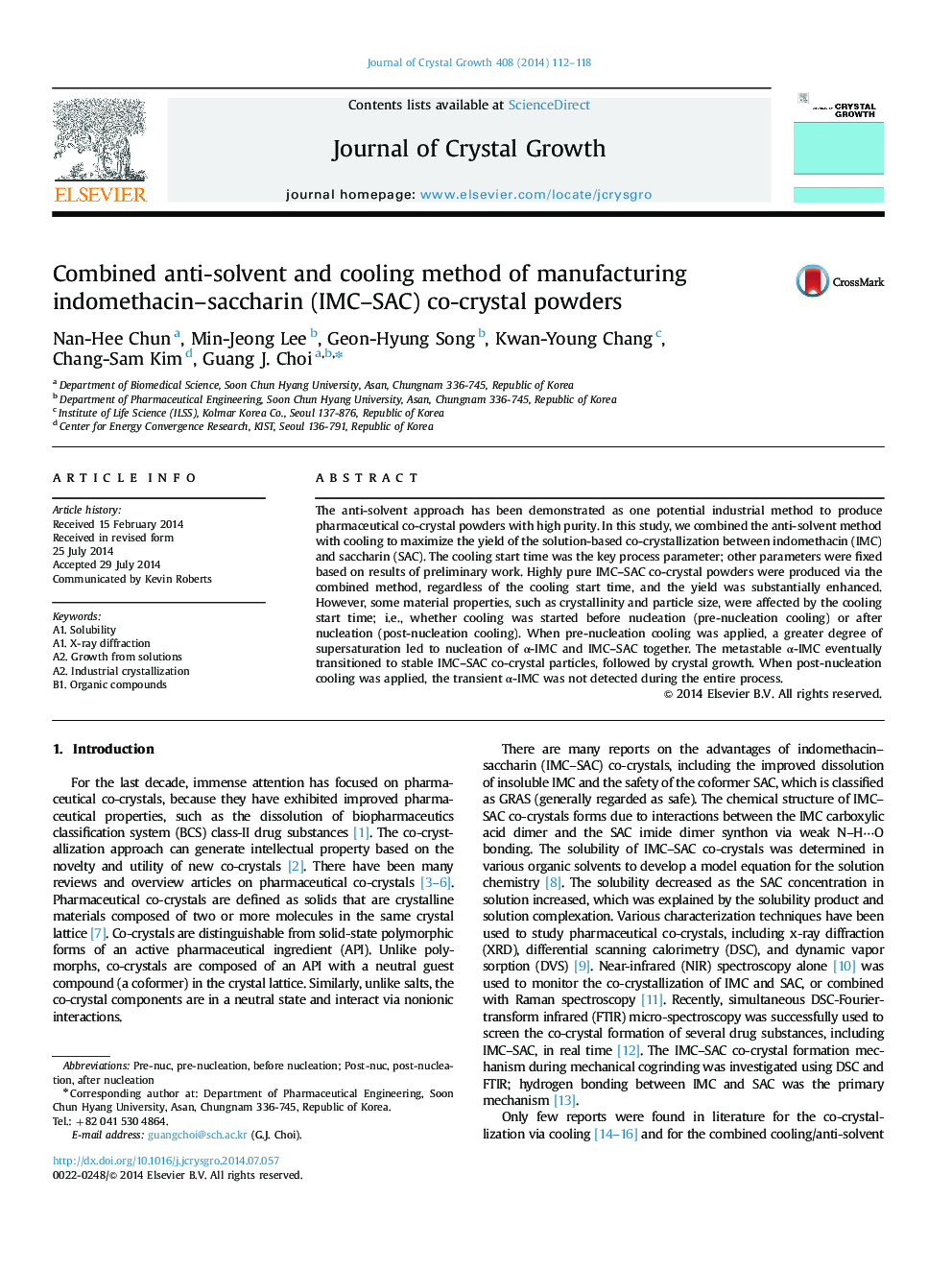| Article ID | Journal | Published Year | Pages | File Type |
|---|---|---|---|---|
| 8150658 | Journal of Crystal Growth | 2014 | 7 Pages |
Abstract
The anti-solvent approach has been demonstrated as one potential industrial method to produce pharmaceutical co-crystal powders with high purity. In this study, we combined the anti-solvent method with cooling to maximize the yield of the solution-based co-crystallization between indomethacin (IMC) and saccharin (SAC). The cooling start time was the key process parameter; other parameters were fixed based on results of preliminary work. Highly pure IMC-SAC co-crystal powders were produced via the combined method, regardless of the cooling start time, and the yield was substantially enhanced. However, some material properties, such as crystallinity and particle size, were affected by the cooling start time; i.e., whether cooling was started before nucleation (pre-nucleation cooling) or after nucleation (post-nucleation cooling). When pre-nucleation cooling was applied, a greater degree of supersaturation led to nucleation of α-IMC and IMC-SAC together. The metastable α-IMC eventually transitioned to stable IMC-SAC co-crystal particles, followed by crystal growth. When post-nucleation cooling was applied, the transient α-IMC was not detected during the entire process.
Keywords
Related Topics
Physical Sciences and Engineering
Physics and Astronomy
Condensed Matter Physics
Authors
Nan-Hee Chun, Min-Jeong Lee, Geon-Hyung Song, Kwan-Young Chang, Chang-Sam Kim, Guang J. Choi,
